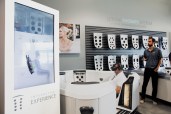Understatement admitted, business has been tough during the COVID-19 pandemic. Even for pool and spa retailers that have been able to keep doors open under the “essential business” tag, there’s no denying that almost everything has changed, including customer shopping preferences.
Essential practices your business may be adopting to survive, such as curbside pickup, backyard consultations, and two-way video pitches over Zoom and FaceTime, may or may not prove helpful tomorrow. However, the three key business competencies that follow will both help you weather the crisis and transform and strengthen your business for years to come.
1. Bolster your digital storefront
As long as the internet has been around, your Google listing, Facebook page, and website are really just additional store locations – they just happen to be located on World Wide Web Street. In fact, digital storefronts may be the only locations where your customers can currently shop.
Sites like Google My Business and Facebook Page Manager can help you set up shop on these critical digital platforms in under an hour. Just add a description, store hours, product categories, and some good photos.
An e-commerce storefront is more involved but has even bigger payoffs. All-in-one platforms like Shopify or e-commerce plugins such as WooCommerce for WordPress can help you build a stand-alone web store or transform your existing site into an e-commerce shop nearly overnight. In addition to regular sales, you can set up recurring subscriptions for items such as chemicals or filters. Yes, you’ll have to figure out the logistics of fulfillment and customer service, but the added convenience for your customers will payoff for years.
2. Work leads like your business depends on it
One of the few unforeseen benefits of stay-at-home orders is that pool and spa brand websites are seeing increased traffic. You don’t have to ponder long to understand. People are at home, bored out of their minds, and staring at their backyards for help.
Increased website traffic brings increased leads. You must track these leads in a Customer Relationship Management platform (CRM) and work them as if life depends on it. Contact leads the minute they appear. According to the Lead Response Management Study, “the odds of qualifying a lead in 5 minutes versus 30 minutes drop 21 times. And from 5 minutes to 10 minutes the dial-to-qualify odds decrease four times.”
Don’t stop at calling leads fast. Call often. Most leads require an average of 5+ contact attempts, yet most salespeople stop at 1 or 2. In addition, you’ll do better if you vary the media you use to contact leads. Call, then attempt a text message, and follow that with an email. A strong lead response strategy will serve you well today and far into the future.
3. Communicate the way your customers prefer
Customer communication has never been so easy, yet so hard at the same time. The phone book exploded into Google, Apple, Yelp, your website, Facebook, Instagram, Twitter, and who knows what else. Oh, and the phone still works too. It may seem impossible to follow all the channels that customers might want use to try to get in touch, yet it’s also never been more important to listen and respond.
One solution to communication madness is to funnel as much communication as possible from wherever customers like to communicate into a single inbox. Tech-powered customer interaction platforms like Podium and BirdEye consolidate customer messages from your website, Google, Facebook, etc. and shoot your responses back, as a text, all while facilitating more five-star reviews.
Adapt, evolve, and transform
Customers adapt and evolve faster than Darwin’s finches. We’ve been watching retail trends, such as online ordering and doorstep delivery, amble along for years. Now, in just a matter of weeks, we’re seeing once-optional avenues solidify into the path retail is likely to follow. Change comes with challenges. However, with a clear plan, technology at your fingertips, motivation to survive, and a little gumption, there is opportunity ahead for the independent retailer. And there’s clearly no time like the present to get started.


